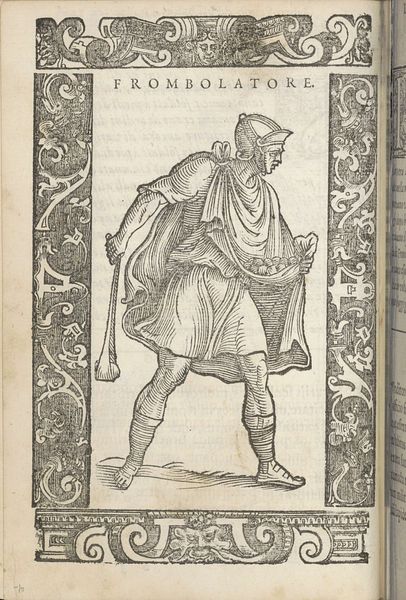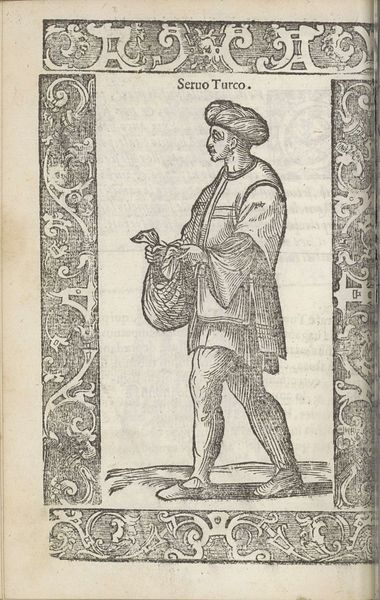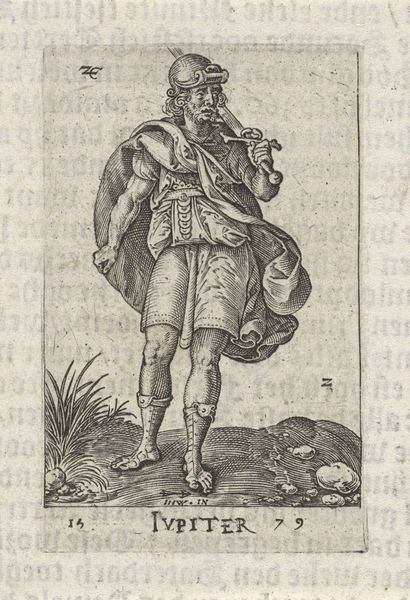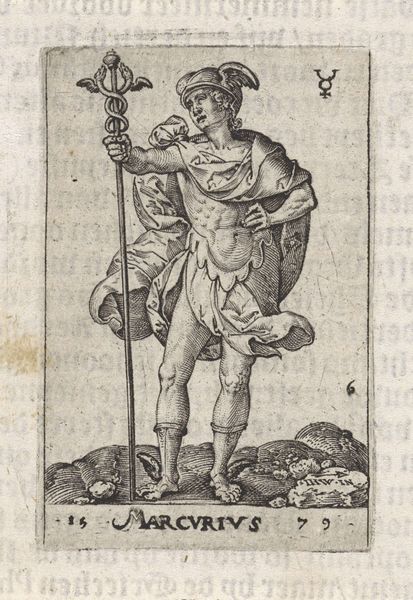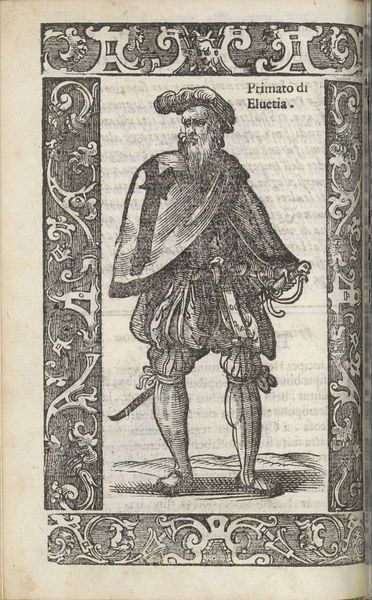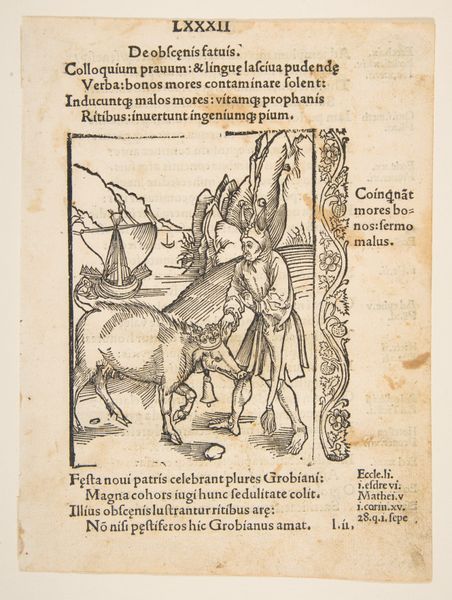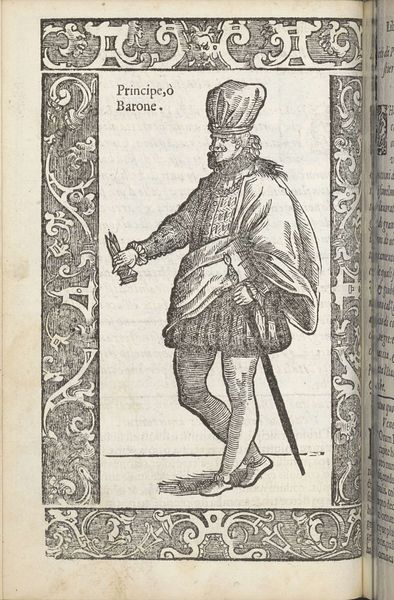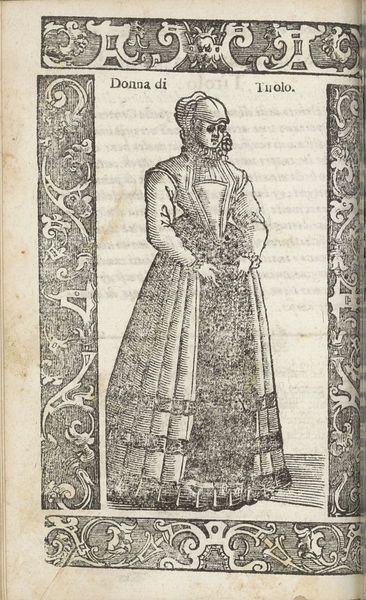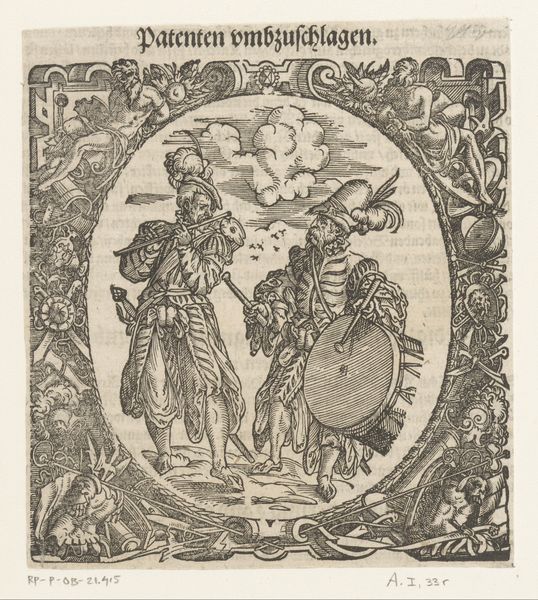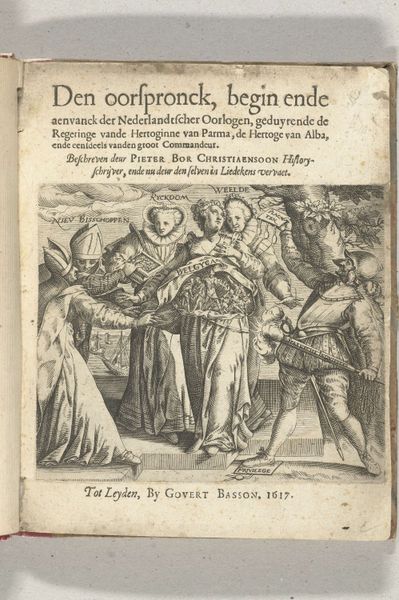
Der Kramer (The Peddler) from De omnibus illiberalibus sive mechanicis artibus by Hartmann Schopper, plate 50 from Woodcuts from Books of the XVI Century c. 1574 - 1937
0:00
0:00
drawing, print, paper, woodcut, engraving
#
drawing
#
narrative-art
# print
#
pen sketch
#
figuration
#
paper
#
woodcut
#
genre-painting
#
northern-renaissance
#
engraving
Dimensions: 79 × 61 mm (image); 126 × 65 mm (image/text); 145 × 88 mm (sheet)
Copyright: Public Domain
Curator: This woodcut, attributed to Jost Amman, and titled "Der Kramer (The Peddler)" originates from the mid to late 16th century. It's a compelling piece now held by the Art Institute of Chicago. Editor: It immediately strikes me with its clarity and directness despite being an engraving. The composition guides the eye straight to the central figure – this peddler, burdened by his wares. There's an almost overwhelming level of detail, and the density contributes to the scene's bustling feel, or attempts to. Curator: Indeed. The figure, likely from Hartmann Schopper’s series "De omnibus illiberalibus sive mechanicis artibus", shows a wandering merchant. Notice the symbolic load he carries: various small wares dangling—mirrors, cutlery, combs and textiles. He holds them out as an offering and holds within himself a symbol for that merchant class from Lydos, from the first to take up their useless but important skills. Editor: It’s fascinating how Amman uses the woodcut medium. The dense hatching creates shading, suggesting volume and weight—both of the peddler and his goods. Look at the lines on his face. You also sense a weight of tradition on the person, this old way of trading and of doing business in a more interpersonal manner. Do you think the clouds overhead add to the weight and oppression of the peddler, creating symbolic depth? Curator: Certainly! The atmospheric effect achieved, rudimentary as it might seem today, gives dimension and narrative scope. I think the image also serves as a visual codex of the time. We get glimpses into everyday life, values, what's coveted or simply useful for the period's citizenry. Beyond aesthetics, these pieces serve almost like anthropological artifacts. They demonstrate the trade skills and cultural exchange through the images of commerce from an almost forgotten trade. Editor: From a formalist perspective, the high contrast and intricate details are superb! It feels very immediate—I want to scrutinize every item displayed, even read all the Latin phrases scattered at the top and bottom. Each adds complexity. Curator: Yes, Amman really excelled in translating everyday observation into visually rich, almost timeless prints. This singular plate reveals both details of mercantile exchange and deep meanings about a slowly transitioning cultural ethos. Editor: Agreed. Jost Amman gives us so much to ponder! A closer look offers insight into technique and form. The narrative that you described provides a richer understanding of its era.
Comments
No comments
Be the first to comment and join the conversation on the ultimate creative platform.
